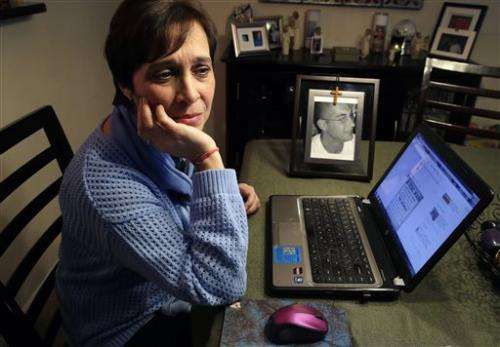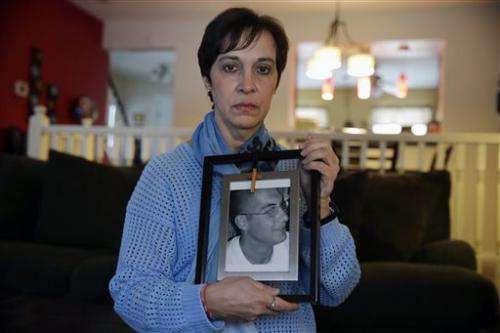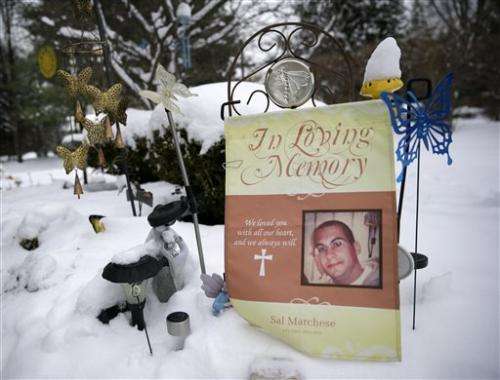US heroin addicts face barriers to treatment

As the ranks of heroin users rise in the U.S., increasing numbers of addicts are looking for help but are failing to find it—because there are no beds in packed facilities, treatment is hugely expensive and insurance companies won't pay for inpatient rehab.
Some users overcome their addictions in spite of the obstacles. But many, like Salvatore Marchese, struggle and fail.
In the course of Marchese's five-year battle with heroin, the Blackwood, New Jersey, man was repeatedly denied admission to treatment facilities, often because his insurance company wouldn't cover the cost. Then one night in June 2010, a strung-out Marchese went to the emergency room seeking help. The doctors shook their heads: Heroin withdrawal is not life-threatening, they said, and we can't admit you. They gave him an IV flush, and sent him home.
Marchese, then 26, and his sister called multiple inpatient clinics only to be told: We have no beds. Eventually, Marchese found space at a facility but was released 17 days later when his public funding ran out. Less than three months later, Marchese was found dead of an overdose in his mother's car.
"Heroin is life-threatening," said his mother, Patty DiRenzo. "We're losing kids every day from it."
Of the 23.1 million Americans who needed treatment for drugs or alcohol in 2012, only 2.5 million people received aid at a specialty facility, according to the federal Substance Abuse and Mental Health Services Administration. Heroin addicts are a small slice of overall drug users, but their numbers nearly doubled from 2007 to 2012, to 669,000. The number treated for heroin also increased, from 277,000 to 450,000.
At issue is whether these addicts are getting the treatment they need to successfully beat their habits. Advocates say they are not, partly because the insurance industry has not come to grips with the dangers of heroin withdrawal and its aftermath.
It is true that, unlike withdrawal from dependencies on alcohol or benzodiazepines like Xanax, heroin withdrawal does not kill. But it is so horrible—users feel like their bones are breaking and fluids leak from every orifice—that many are drawn back to the drug, with fatal consequences.

Even if addicts survive withdrawal, they often relapse if they fail to make it into treatment. That's when many overdoses happen, because they try to use as much heroin as they did before, and their newly drug-free bodies can't handle it.
Because withdrawal is not directly deadly, most insurance companies won't pay for inpatient rehab, said Anthony Rizzuto, a provider relations representative at Seafield Center, a clinic on Long Island. They either claim that the addict does not meet the "criteria for medical necessity"—that inpatient care would be an inappropriate treatment—or require that the user first try outpatient rehab.
"Ninety-nine-point-nine percent of the time, we hear 'denied,'" Rizzuto said. "And then we go to an appeal process. And we get denied again."
Susan Pisano, a spokeswoman for America's Health Insurance Plans, the trade association that represents the health insurance industry, defended the industry's practices. "Health insurers rely on evidence-based standards of care that look at: what is the right level of coverage, the right site of coverage, the right combination of treatments," she said.
There is debate over the best way to get clean, but most addiction experts agree that inpatient care is often essential for full-blown addicts.
But for the few who do get some insurance coverage, what they're getting falls short of what they need and often what their policies allow. While most insurance policies allow coverage of up to 30 days, nobody gets all 30, said Tom McLellan, CEO of the nonprofit Treatment Research Institute in Philadelphia who served as deputy drug czar under President Barack Obama. The average duration is 11 to 14 days.
"It's not enough time. And what do you do?" McLellan said. "If the treatment program calls you up and says, 'Your loved one is half-treated, we'd like to keep him for another two weeks,' you take out a mortgage on your house and you cover it."
Elizabeth Thompson's parents did just that to pay for her treatment in eight inpatient facilities beginning at age 16. It wasn't until she spent several months at a long-term facility in Florida that she successfully stayed clean.

"It almost didn't matter so much what they did there ... but just taking me out of my environment and keeping me in a place that was really difficult to use," said Thompson, 30, a policy coordinator for the Drug Policy Alliance in New Jersey.
The cost of three to five days of heroin detoxification alone is around $3,000, Rizzuto said. The average cost of a 30-day inpatient stay is about $30,000, while outpatient programs typically cost $1,000 per month. Most clinics require payment upfront if insurance can't be used.
There are about 12,000 addiction treatment programs nationwide, according to McLellan's organization. Of those, about 10 percent are residential facilities, about 80 percent are outpatient programs and about 10 percent are methadone clinics. Two-thirds of all treatment programs are nonprofit programs funded by government grants, McLellan said. When the grants run out, programs are forced to put patients on a waiting list.
In New York, a bill pending in the Legislature would amend the state's insurance law to force providers to approve authorization and payment of substance abuse care that is deemed necessary by a doctor. That means the only prerequisite for receiving drug abuse treatment would be a doctor's referral, preventing insurance companies from denying treatment based on a complicated set of guidelines. A similar law was passed in Pennsylvania years ago.
Eventually, the federal Affordable Care Act should improve treatment for heroin addicts because up to 5 million people with drug and alcohol problems are eligible for insurance coverage under the law. But it will likely take years before insurance companies fully comply with the law, McLellan said.
"And meanwhile," he said, "people will die. That's not melodramatic. That's a fact."
© 2014 The Associated Press. All rights reserved.


















